Reloader’s Press
New Springfield 1911s Single- and Double-Stack Handguns
column By: Jeremiah Polacek | June, 25
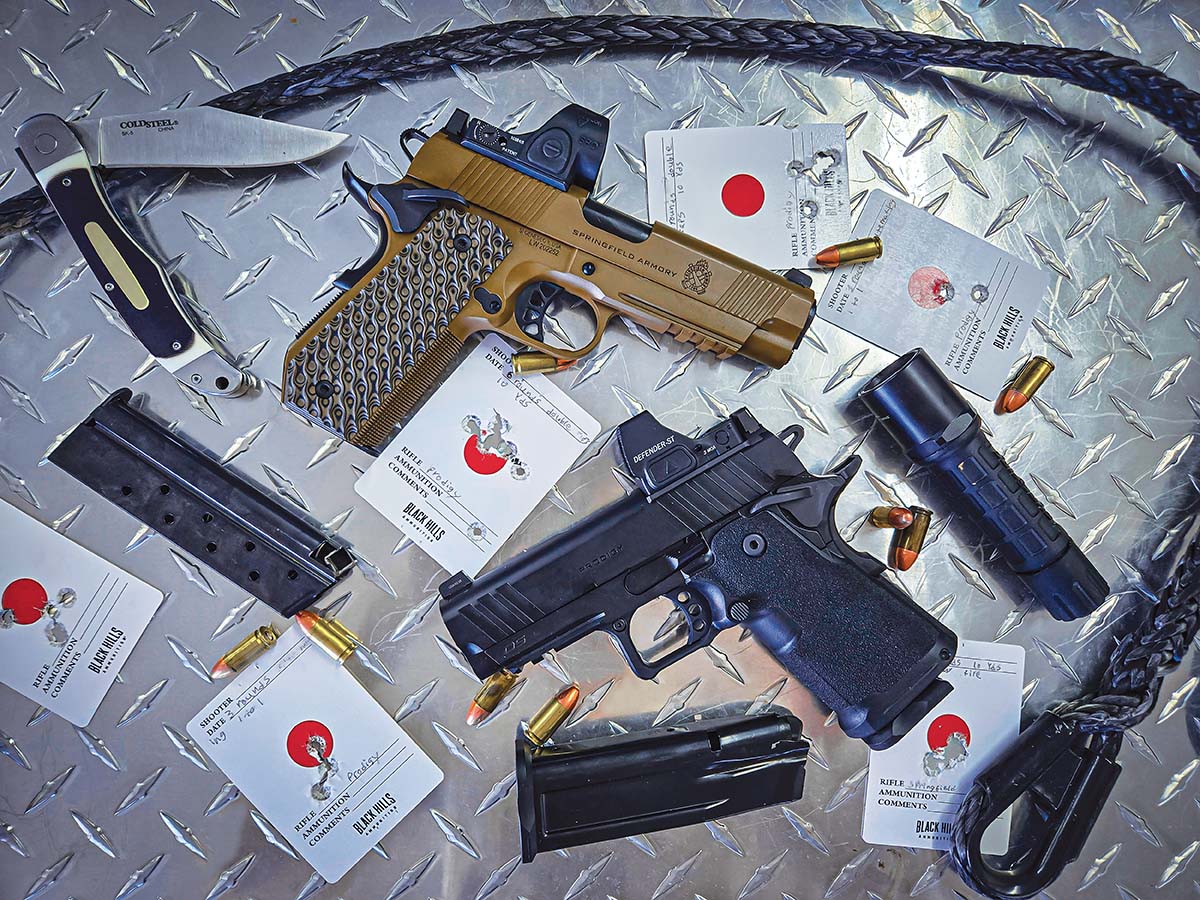
Springfield Armory also enjoys a rich history. It was originally established in 1777 by the U.S. Government to provide arms and ammunition to the Continental Army. General George Washington authorized its creation originally as a magazine for the storage of weapons and munitions, but around 1794, it transitioned into full-scale manufacturing. During the Civil War, Springfield Armory manufactured arms for the Union Army, including the Springfield Model 1873 Trapdoor rifle.
During World War II, Springfield Armory supplied arms to the Allies under the Lend-Lease Program. The development and production of the M1 Garand also took place at Springfield Armory; that rifle now holds a legendary status among firearms enthusiasts. However, by 1968, due to budget cuts, the U.S. Government closed the facility in Springfield, Massachusetts, and it now sits as a historic site that houses one of the largest collections of military small arms.
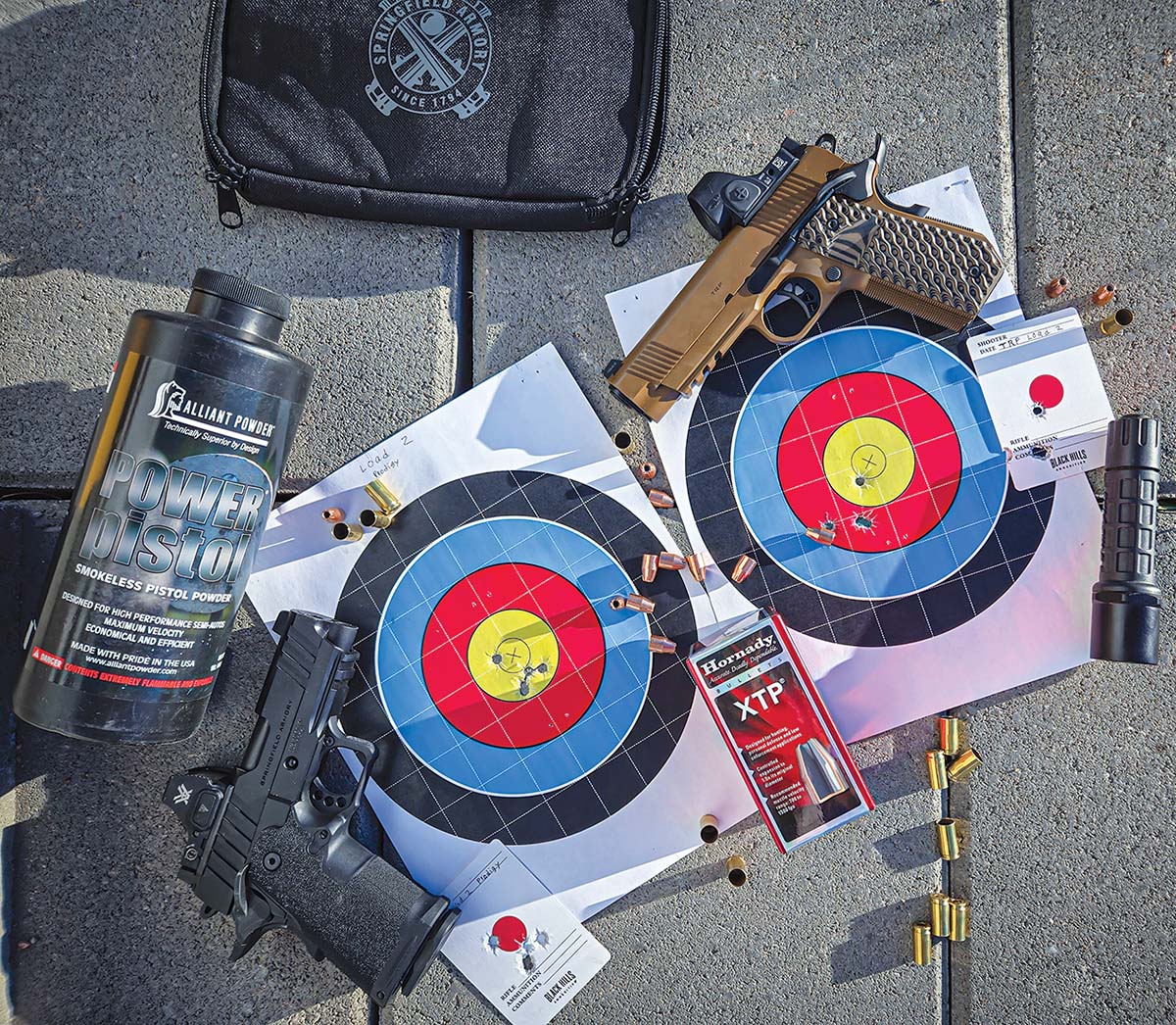
The first model we’ll be taking a look at is the Prodigy 1911 DS 3.5-inch Compact; it is a double-stack 1911 with a capacity of 15+1 rounds. Its 3.5-inch barrel makes it very concealable, and it is optics-ready out of the box. It weighs in at 1 pound 13 ounces with an empty magazine and red dot. It boasts a billet aluminum frame and a forged Carbon steel slide. It features a black CERAKOTE finish with a tritium-illuminated front sight and a black serrated rear sight. Since the handgun is optics-ready via the Agency Optic System (AOS), a Vortex Defenderwas mounted for testing purposes. MSRP for this handgun at the time of this writing is right around $1,550, which is very modest for a double-stack 1911.
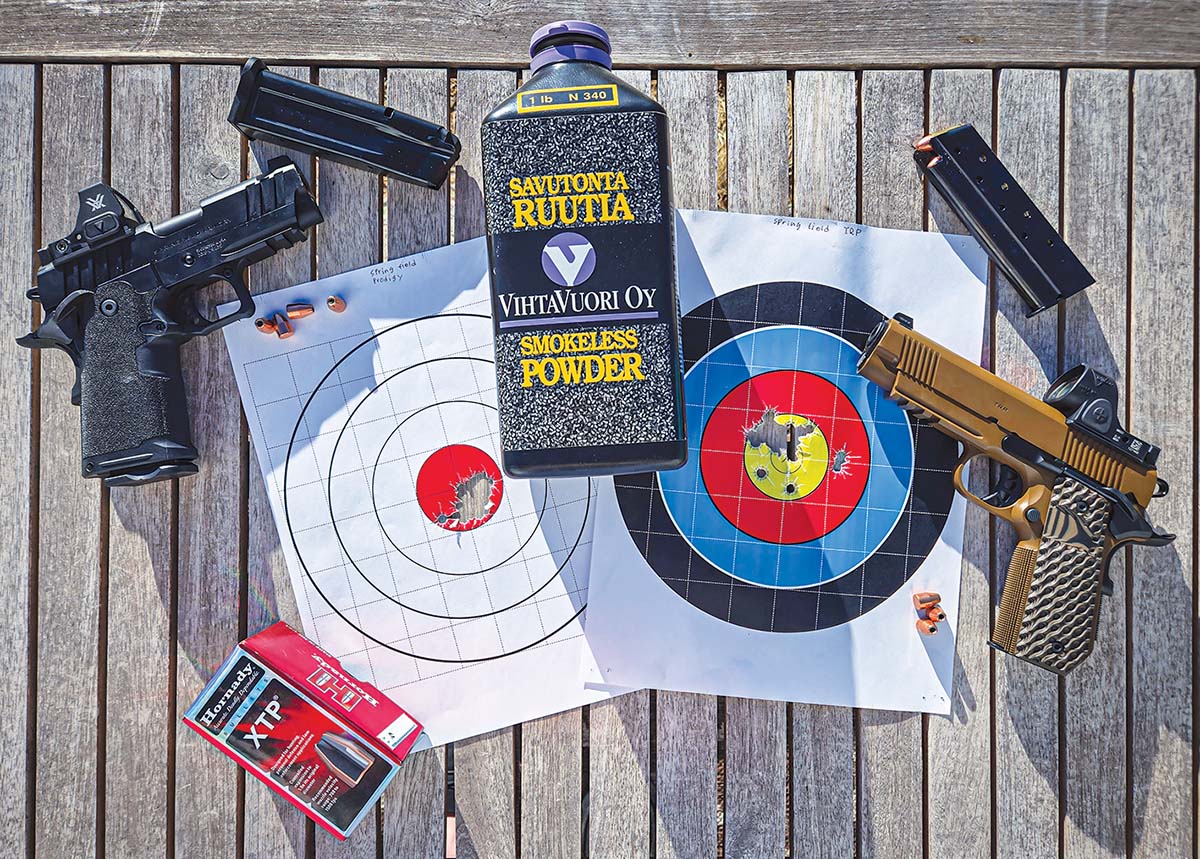
Over the course of several months, both of these guns were put through a series of tests side by side. The first was a reliability test in which 200 rounds of factory and handloaded ammunition were run through both guns. This involved shooting “Bill Drills” and various other skill-building exercises to keep testing fun and productive. Both guns performed well without any malfunctions, which meant it was time to conduct some accuracy testing and begin developing handloads for each of these guns.
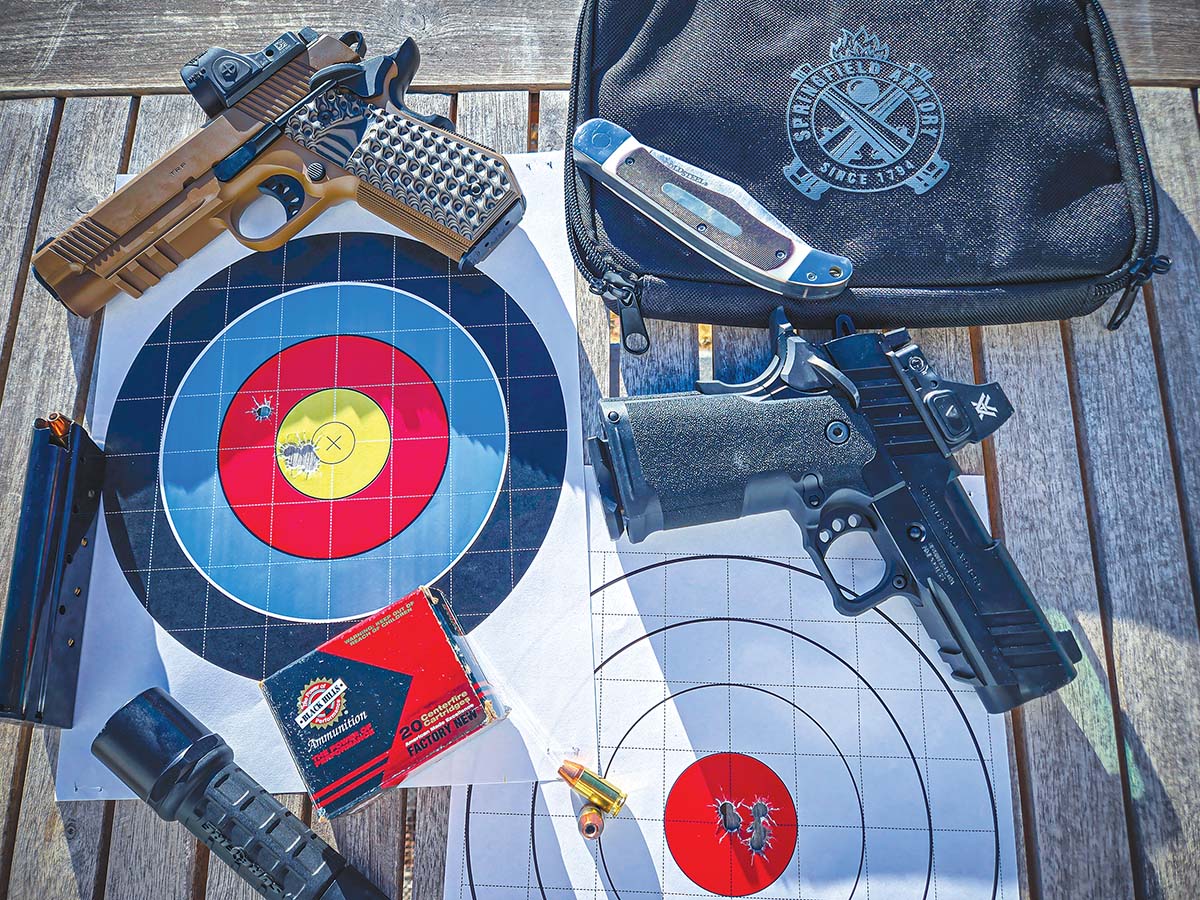
After establishing a baseline of what to expect with factory ammunition, I set out to develop handloads for both handguns. I wanted to test the same loads in both handguns so they could be compared side by side in the load table. After some digging around in notes from previous tests and consulting LoadData.com, eight different handloads were assembled that were performance-proven loads in other handguns. For the components, reliable powders known for accuracy, good case fill and producing little velocity variation from shot to shot were selected. The bullets selected also had a reputation for being accurate and many are excellent choices for self-defense, such as the Lehigh Extreme Defense, Speer Gold Dot and Hornady XTP. In exterior ballistic testing, all of these bullets showed excellent terminal performance in a variety of test mediums.
New unfired Starline cases and CCI 500 primers were used for all handloads – these are two products that have proven themselves in terms of quality and reliability. In a torture test that was conducted in-house, Starline 9mm Luger cases with CCI 500 primers were used in loads that exceeded 50,000 PSI. Well over Sporting Arms and Ammunition Manufacturers’ Institute (SAAMI) maximum pressure, the primer was not pierced, and the primer remained in the primer pocket of the case.
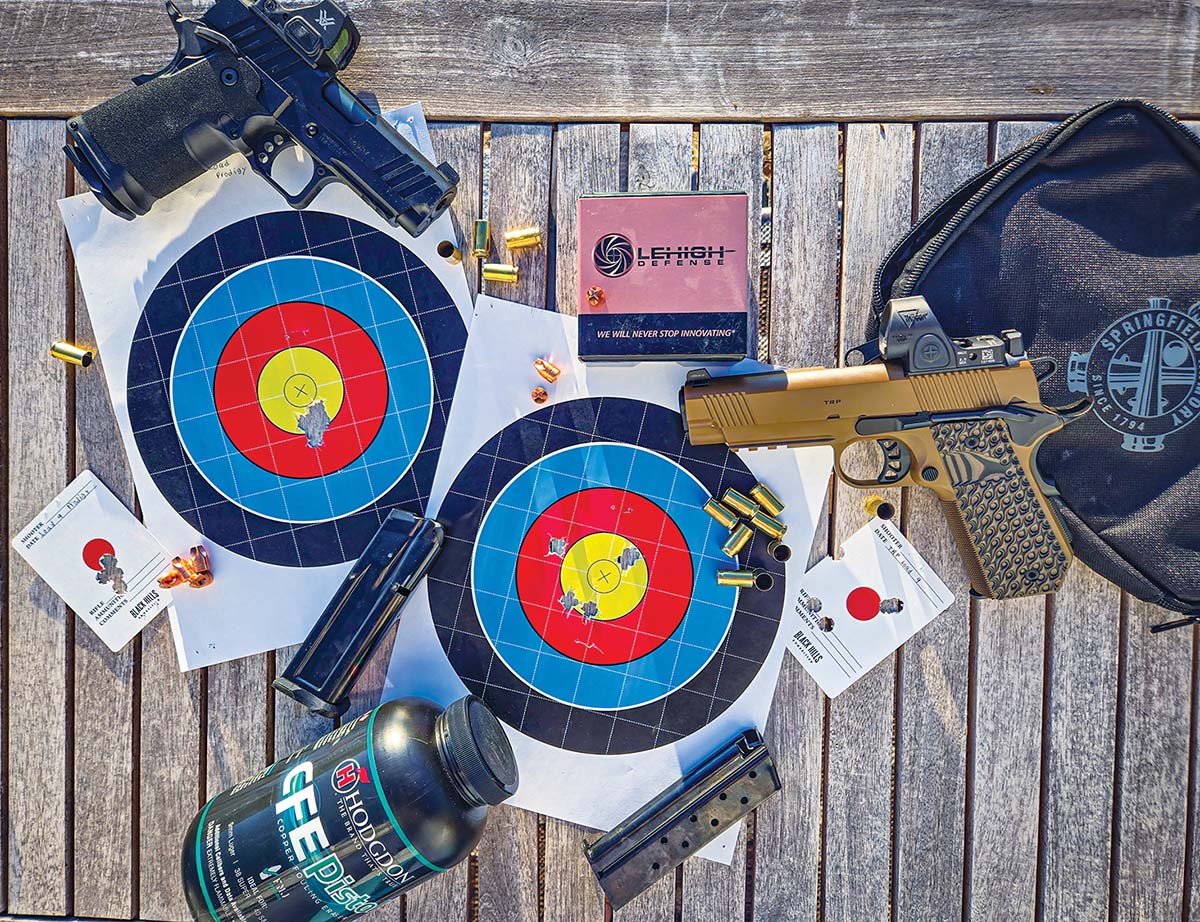
When it came time to test the handloads, each of the guns was once again secured in the Ransom International Master Series Rest, and a target was placed at 20 yards. As can be seen from the load table, both handguns performed well. I was pleasantly surprised with the performance of the Prodigy in terms of accuracy. The TRP performed well and produced groups about what I would expect from a factory built 1911. However, I will admit that it was overshadowed by the impressive display from the Prodigy.
To conclude the accuracy testing, 25 rounds were loaded using Vihtavuori N-340 powder and Hornady XTP bullets. Both guns were fired and reloaded prior to the slide, locking to the rear on an empty magazine until all 25 rounds were on target. The accuracy of the TRP was respectable, producing a group size of 2.18 inches; however, the Prodigy produced a stellar group of 1.33 inches.
In conclusion, both guns performed very well. The accuracy differences were surprising, to say the least, but that highlights the importance of thorough testing and evaluation. That said, both are more than accurate enough for the roles in which they were designed. Currently, both guns have over 400 rounds through them; the Prodigy has yet to experience a malfunction, while the TRP has experienced a single, double feed. Both guns are reliable, accurate and attractive in their own unique ways. The overall quality, fit and finish on both is excellent and I appreciate the ambidextrous safeties on both guns.
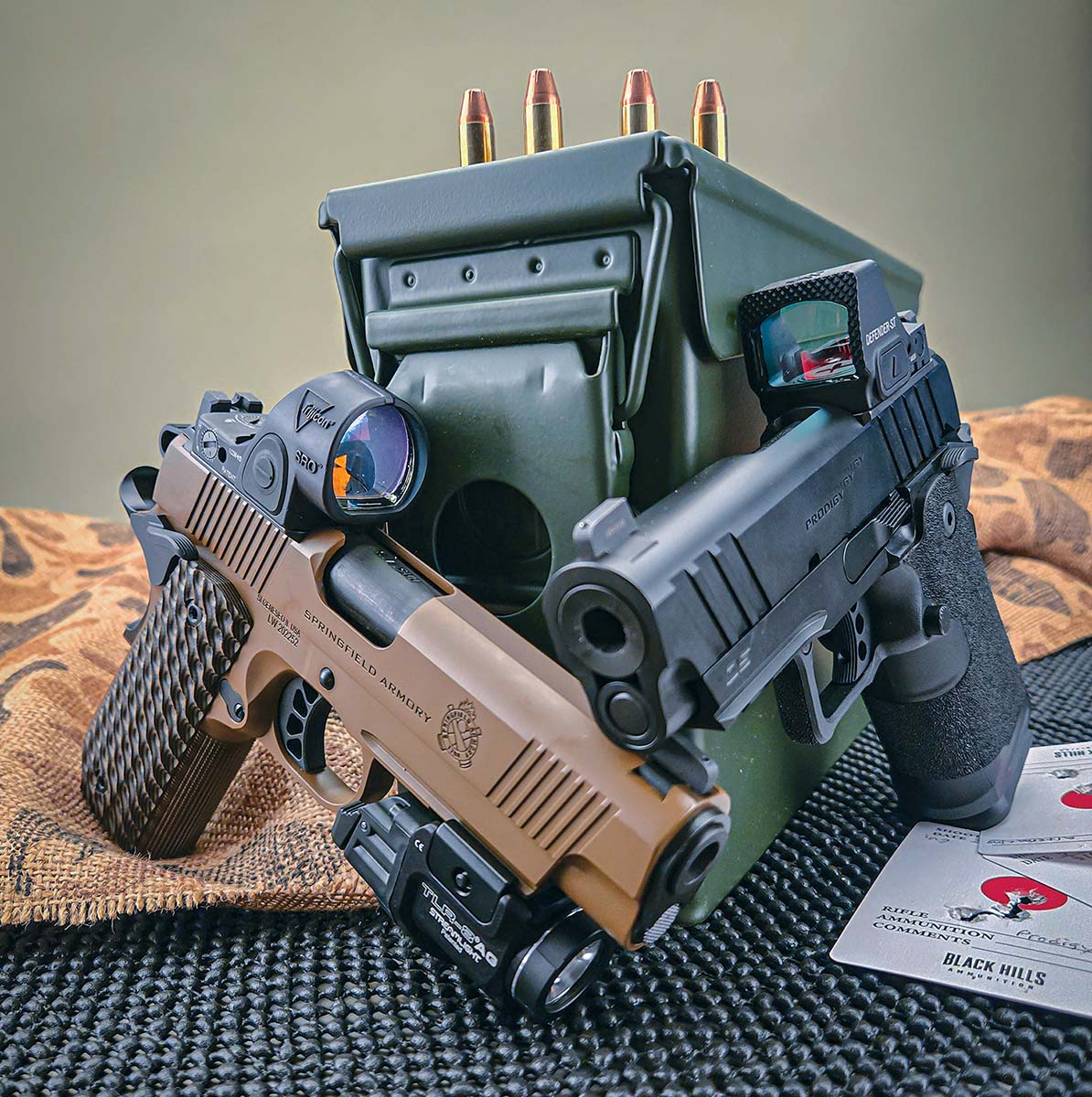
The TRP also feels good in the hand, but after extended range sessions of 150 rounds in a day, the aggressive grips can fatigue one’s hand. However, with gloves, they are a very welcome addition. It is also a big help when it comes to one-handed and weak-hand drills. The trigger feels good with minimal takeup before breaking at 5 pounds 6 ounces with a crisp and very positive reset. The accuracy was good and about what I expected from this handgun shooting offhand, I was able to keep five shots inside of 21⁄2 inches at 20 yards from a supported position. The overall style of the TRP is excellent, with the carry contour, coyote CERAKOTE finish, and skeletonized hammer all making for an attractive piece.
Both handguns have many desirable features, such as the Agency Arms Optic System, which is a rugged and reliable solution for optic mounting. Having rails for weapon-mounted lights is a big plus. Accuracy and reliability are a must; the tritium-illuminated front sights are a nice touch as well. Single action, crisp triggers and positive reset make for an all-around enjoyable experience. It would be hard to go wrong with either one of these guns, or better yet, buy both!
.jpg)
.jpg)


